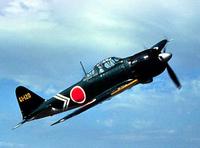 In history, Zen priests and monks did not always behave according to popular conception of those in the West. That it was practiced by samurai is sometimes forgotten. In 1933 the Japanese government withdrew from The League of Nations after coming under sharp criticism for its aggression in China. After invasion, it set up Manchuria as Manchuko, a puppet state. In Zen temples, the mother country was seen as following a kind of divine right. During the Rape of Nanking and its unspeakable atrocities, there was no outcry from those wearing robes. (Nor does Japan to this day acknowledge its atrocities, a source of friction with China.) Instead, Japan was regarded as the natural heir to all the city's riches. The attack on Pearl Harbor did not disturb their Zen meditation. There was no attempt to "awaken" generals in the Japanese Imperial Army. Buddhist priests, whom we assume to be pacifists, did not act that way.
In history, Zen priests and monks did not always behave according to popular conception of those in the West. That it was practiced by samurai is sometimes forgotten. In 1933 the Japanese government withdrew from The League of Nations after coming under sharp criticism for its aggression in China. After invasion, it set up Manchuria as Manchuko, a puppet state. In Zen temples, the mother country was seen as following a kind of divine right. During the Rape of Nanking and its unspeakable atrocities, there was no outcry from those wearing robes. (Nor does Japan to this day acknowledge its atrocities, a source of friction with China.) Instead, Japan was regarded as the natural heir to all the city's riches. The attack on Pearl Harbor did not disturb their Zen meditation. There was no attempt to "awaken" generals in the Japanese Imperial Army. Buddhist priests, whom we assume to be pacifists, did not act that way.In WWII for the Japanese war effort, Zen Buddhists of the Soto sect raised money for two fighter planes. The Rinzai sect raised money for three. As well, Kanzeon, bodhisattva of compassion, was renamed Kanzeon Shogun, rather like Jesus General, an oxymoron.
A reading of D.T. Suzuki--the man generally acknowledged as introducing Zen to the West--reveals that Zen has no clear moral position. Suzuki says that Japanese Zen teaches its practitioners to merge with circumstances and be loyal. Hence, if you are governed by Tojo, Mussolini, or Franco, be a good fascist and make bullets, but don't make waves.
Quite simply, for all the vaunted emphasis on compassion of Eastern teachings, you must enter Zen (or any meditative religion) with your own moral compass accurately calibrated. More.

No comments:
Post a Comment
Note: Only a member of this blog may post a comment.